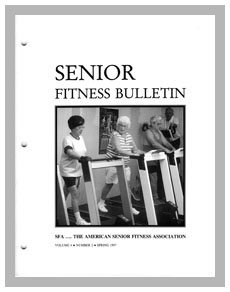Reduce Your Risk Of Injury During Your Workouts
Most of us know someone who has awakened the day after his/her first exercise session and discovered they were so sore they could barely walk! Working-out should not be a painful event. It should be an enjoyable experience that you want to do again and again. Here are some tips to help you have a better workout and reduce your risk of injury.
One of the most important things you can do to prevent exercise-induced injuries is warm-up before you workout. A warm-up should be 8-12 minutes long and consist of limbering movements that increase body temperature and blood flow, followed by a few static stretches that are specific to your task. Example: If you’re a runner, start with a moderately paced walk followed by stretches for the hamstrings, quads, calves, and hip flexors. Then begin your usual running routine.
Practicing good posture and proper form is another great trick to prevent workout injuries. A proper stance when performing upper body strength training exercises should include: legs shoulder width apart; knees slightly bent (never locked); abdominals contracted with a slightly forward pelvic tilt. Pay attention to your posture as you lift weights. If you can’t maintain the above stance and you start to rock your body or use other body parts to lift the weight…STOP. This is when injury can occur. Rest a few seconds and then complete your set with proper form. Movements should be slow and controlled, not jerky. Be kind to your joints. Never lock, grab, or hyperextend a joint. Listen to your body. If an exercise causes you pain, don’t do it. There are several different options for all muscle groups. Find one that feels right for you. If you’re not sure what to do, a session with a personal trainer can get you on your way to success.
If you’re new to exercise, be careful not to do too much too soon. Obtain a physical before starting any fitness program. Begin with 10-20 minutes of cardiovascular exercise and a few strength training moves. Gradually work up to being able to do more. Make sure you wear breathable clothing, supportive shoes, and you are properly fueled and well hydrated (don’t exercise on an empty stomach).
If you’re an experienced exerciser, be careful not to over-train. Too many hours in the gym can lead to overuse injuries. Everyone should have rest days to let muscle fibers repair. Participate in different cardiovascular activities (cross train) so you use different muscle groups instead of doing the same type of exercise all the time. This also helps prevent plateaus and boredom. When doing strength training, most people prefer to do upper body exercises one day and lower body the other day. This way the muscle groups you are not working get to rest and repair.
Stretching is another good tool to help you ward off injuries. Stretching helps circulate blood and oxygen into the muscles, reducing tension, soreness, and increasing range of motion in the joints. Stretch after you are done with exercise. Hold stretches for 15-30 seconds for a general stretch. Hold 30 – 60+ seconds to work on improving flexibility. Stretches should be static (held without a bounce).
The shoulders, spine and knees are the most common areas for exercise-related injuries. Below are motions to avoid during your workouts: (These tips are for the average exerciser. Sports specific exercises may require some of the below movements to achieve a particular goal for that sport).
Shoulders:
1) Avoid behind-the-neck lat pull-downs. Perform a lat pull-down in front of the head instead.
2) Don’t do military presses if you have a shoulder injury.
3) Avoid excessive range of motion in bench presses, flys and pec decs. Don’t hyperextend.
4) Keep upright rows and lateral raises to 90 degrees or less of shoulder abduction.
Knees:
1) Avoid knee hyperextension, twisting, and deep knee flexion.
2) Don’t perform squats at 90 degrees (deep knee squats), deep knee lunges or bouncing lunges. This puts too much stress on the knee joint. Perform partial squats/lunges instead or, do a different exercise.
3) In everyday activity, if stairs are painful for you, side-step down them.
Spine:
1) Keep your abdominals and your core strong!
2) Avoid bending and twisting motions. If you have a pre-existing spinal problem avoid spinal extension exercises until muscle balance has been improved. (no windmills)
3) Keep up with your stretches! Perform stretches for the low back, hamstrings, quadratus lumborum (QL) and iliopsoas/hip flexors. No hurdler’s stretches.
4) Avoid unsupported spinal flexion exercises (dead lifts, good-mornings, bi-lateral bent-over rows or bilateral bent over reverse flys).
5) Don’t do double straight leg raises, full straight-leg sit-ups, full sit-ups and V-sits. Modify these by bending your knees, doing single leg lifts or performing crunches (partial sit-ups).
6) Be careful not to interlock your fingers behind your head when you do crunches. This causes force on the c-spine. Place fingertips behind the back of your head or cross your arms at your chest.
7) Some yoga moves like the full cobra and the plough (should be avoided or modified).
Exercise should be exhilarating, fun, and a great stress reliever! By following these simple suggestions you can significantly reduce your chances of injury and reap the benefits an awesome workout has to offer!
Do’s and don’ts were taken from AFAA (Aerobics & Fitness Association of America) Injury Prevention and Exercise Progressions Workshop Manual and AFAA’s Personal Fitness Training Theory & Practice, Mary Yoke, MA.
-
How To Reduce Belly Fat By Exercise
If you are thinking to reduce belly fat in your abdominal area, you mu
-
Work Wonders With a Weight Loss Calculator
Using a weight loss calculator can help
-
5 Natural Ways To Reduce Inflammation In Your Body
-
The 5 Keys To Finally Lose Fat Fast
Losing fat in my opinion is not all that difficult. You need to posses
-
How to Burn Thigh Fat Effectively?A Step-by-Step Guide
If you want to know how to burn thigh fa
-
Understand Weight Loss Plans
Maybe you have never dieted before, and maybe you have tried each and
- DON'T MISS
- Fat Loss and Getting Through The Weekend
- The five CRITICAL things to do for your health and weight loss
- The Top Ten Things You Dont Want To Hear About Losing Weight
- Enlarged liver (hepatomegaly) from fatty liver disease or inflammation leads to swelling, fatigue, and weakness
- Best Weight Loss Diet
- 6 Fast Weight Loss Tip - Be Slim in a Flash
- Weekly health news roundup: Celiac disease, ulcerative colitis, rheumatoid arthritis, fibromyalgia, and inflammatory bowel disease
- 5 Main Reasons Why People Lose Motivation to Lose Weight
- Follow These Tips To Succesfully Lose Weight.
- Living With Nutritional Deficiency After A Weight Loss Surgery




